Rimac: Robotaxis Will Be Driving in Zagreb in 2024
ZAGREB, 8 July 2021 - The owner of Rimac Automobili, Mate Rimac, said on Thursday that his company is developing a project for autonomous vehicles, robotaxis, and that the first ones if the project is a success, could be tested in Zagreb streets in 2024 already.
He underscored that at the start of next year he would present the robotaxi, a driverless vehicle, to the public. He added that the Nevera model is now completing homologizing and testing and that soon it will be put into serial production. The robotaxi project should be much larger than Rimac Automobili.
"This is something with big potential. A robotaxi prototype has been made, our guests saw it today, however, we have to bring it to a higher level and present it as it should be, probably at the start of next year. The idea is that in 2024 we launch that autonomous vehicle on Zagreb's streets. If we don't succeed with that project, all the money that we invested and will invest will fall through, and that's hundreds of millions. Our objective is to do that by 2024, together with all the necessary infrastructure," said Rimac.
Rimac reiterated that his company has still not succeeded, that success is yet to come, but said that it is going towards that with 1,000 employees and more than €200 million in investment attracted and many more investment to come.
"And that is an investment in development, employment, and production in Croatia that is exported to the entire world. It was a big thing for us to take over Bugatti, a company that has been in business for more than 110 years. That is a big responsibility. For the first time in history, VW has divested a brand from its portfolio," underscored Rimac, adding that VW is the biggest company in Europe with annual revenue of €250 billion.
Bugatti is a successful company but Rimac Automobili wants to make it even more successful, he said.
"It's not true that Bugatti is a hot potato. They are successful. In the past three years, they have been profitable. They sell 90 vehicles a year and have a revenue of about €300 million," he underscored and added that the VW Group agreed to the transaction because it believes that Rimac Automobili has the technology and right approach for something like that.
In that regard, he explained how Porsche had brought its Panamera prototype to Rimac Automobili and said that it had three months to show how the vehicle can be improved. "Within the same battery dimensions and same mass, we created a vehicle that has twice the range and twice the battery capacity," said Rimac.
For more made in Croatia news, follow TCN's dedicated page.
Zagreb Trams - Iconic and Integral to Life in Croatia's Capital
November 20, 2020 – Today is the 20th anniversary of the completion of the Zagreb trams network. Namely, on this day in 2000, the last current line from Jarun to Prečko was opened. To celebrate, we take a look at the iconic, blue trams of Zagreb
It's all too easy to take for granted the things you see every day. That's certainly true of city residents in their feelings for Zagreb trams. As it currently stands, the Zagreb trams network was completed on 20th November 2000, when the existing line to Jarun was further extended to Prečko, which lies to the west of the city centre. In the two decades that have followed, Zagreb trams have cemented their place as an icon of the city, have helped changed the cityscape of Zagreb and have facilitated the friendships, education, careers, relationships and businesses of the Croatian capital over millions of journeys. All without much fanfare or celebration.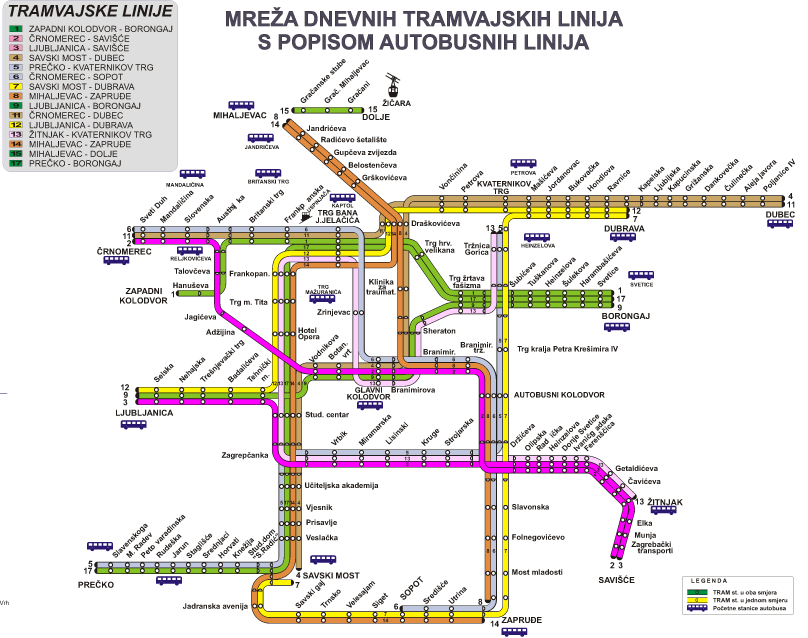 The Zagreb trams network
The Zagreb trams network
The Zagreb trams network consists of 15 lines which connect suburbs as far west from the centre as Prečko (8 kilomtres), as far east as Dubec (8 kilometres), north to Mihaljevac (3 kilometres) and south to Avenue Dubrovnik in Novi Zagreb (an additional line, running further south to Velika Gorica, servicing Zagreb Franjo Tudman airport, is planned). Throughout the night, four lines remain, connecting essential workers, night-time workers and late-night revellers (although they are sometimes replaced by night buses due to maintenance works).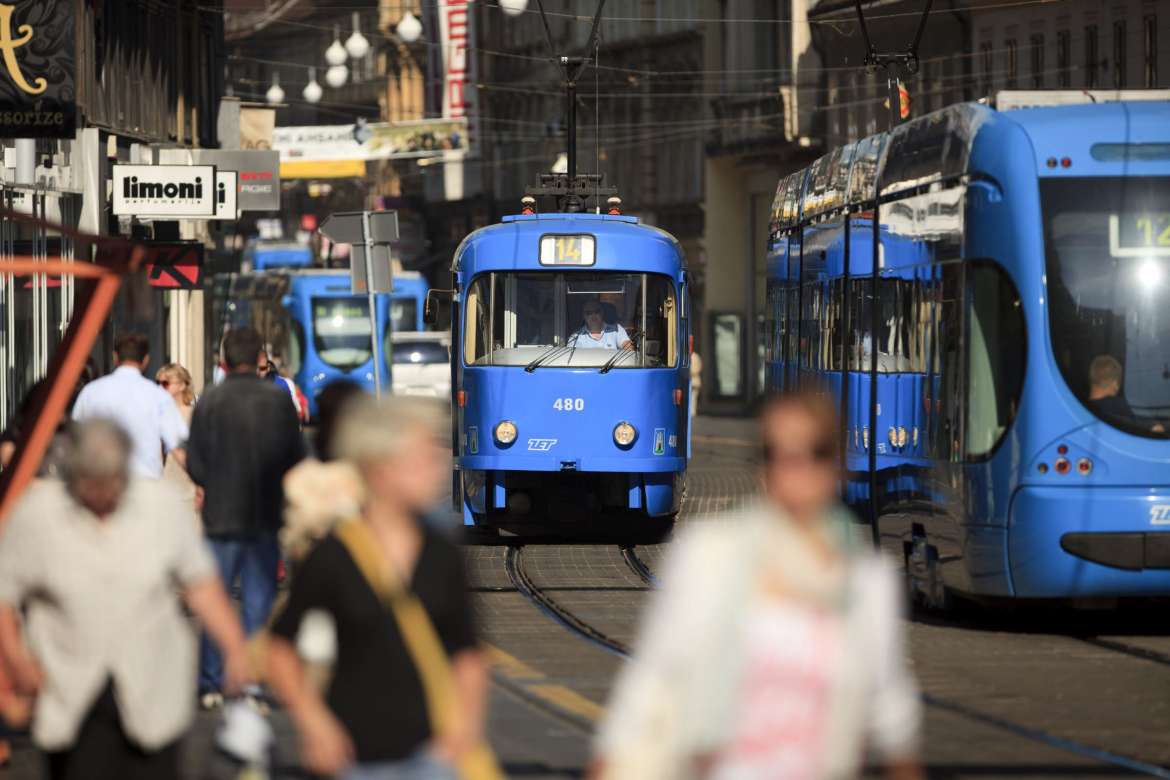 © Romulić & Stojčić
© Romulić & Stojčić
The completion of the line to Prečko catalysed the expansion of the westerly-lying suburbs of Špansko and Prečko. The change visited upon the rest of the city by the Zagreb trams network has been no less fundamental. Certainly, at weekends, Zagreb can confidently claim to be a 24-hour city because of its trams. Day or night, no place within the city suburbs is too far to reach because of Zagreb trams.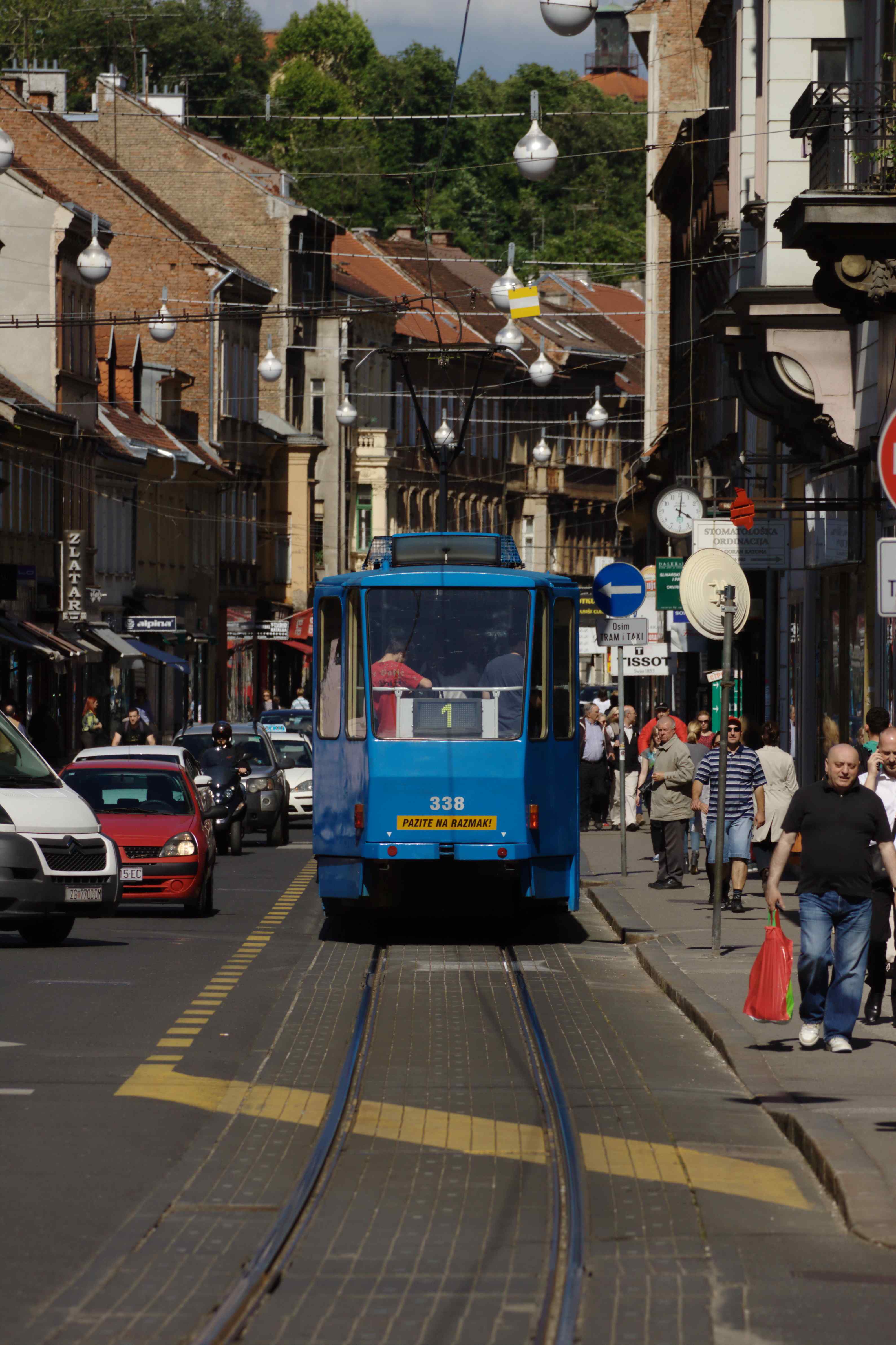 © Aktron / Wikimedia Commons
© Aktron / Wikimedia Commons
So reliable and well used are Zagreb trams that it's perhaps understandable why they are sometimes taken for granted. Whole generations now living in the city do not even know a Zagreb without a tram network. Its importance to all was put into sharp focus during the early part of 2020 when the Zagreb trams network was temporarily closed in response to the COVID-19 pandemic. Perhaps only then was the true scale of integration between Zagreb trams and the lives of city residents truly recognised. 'You don't know what you've got 'til it's gone.'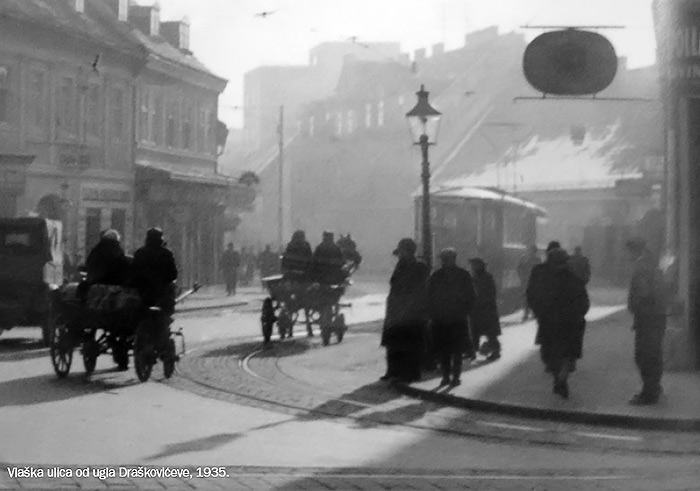 Zagreb trams on the corner of Vlaška and Draškovićeva streets in 1935 © Public domain
Zagreb trams on the corner of Vlaška and Draškovićeva streets in 1935 © Public domain
Lest we forget to give credit where credit is due, here are some interesting facts about Zagreb trams.
The Zagreb trams network was started in 1891 with the opening of the first line. Back then, the trams were pulled by horses - the electric tram didn't debut in Zagreb until 1910. The first journey started at the site of today's Technical Museum and the first track ran for some 8-kilometres. So fascinated were Zagreb residents with the introduction that some 20, 000 passenger journeys were made on the second day. The population of Zagreb at the time was 40, 000.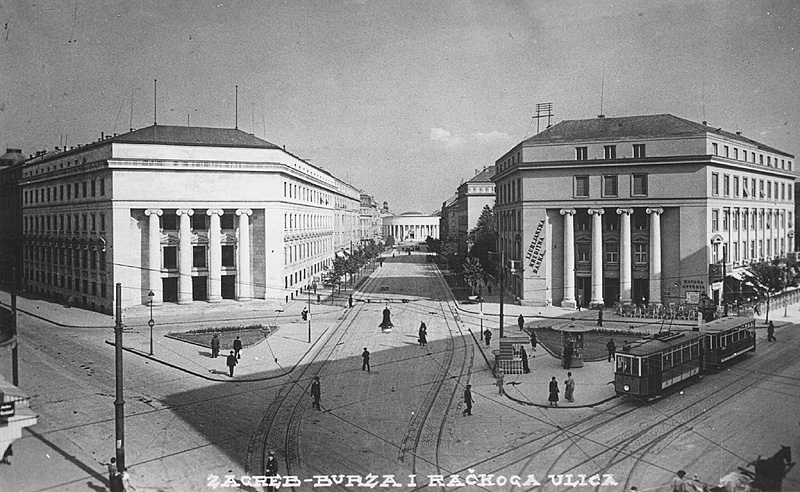 The route from Draškovićeva to Džamija in the 1930s © HappyV
The route from Draškovićeva to Džamija in the 1930s © HappyV
Osijek in Slavonia, east Croatia, was the first city in the country to have trams. The first international railway line into Croatia was built to facilitate holidays on the Kvarner coast, but the rail line ended in Rijeka. The upper echelons of Austro-Hungarian society who took this train were transported to their preferred destination – Opatija – by tram.
The most-modern low floor trams that now run in Zagreb were introduced in 2005.
There are two separate tram stations in Zagreb which have the same name – there are Heinzelova stations on the lines both to Savišće and Borongaj. The view from Džamija up to Draškovićeva and the cathedral in 1947 © Romák Éva
The view from Džamija up to Draškovićeva and the cathedral in 1947 © Romák Éva
The Zagreb trams network has 116.3 kilometres (72.3 miles) of metre gauge track. It is the same track all over the city, except for the line which runs north to Mihaljevac, which is unique. This line is both the fastest and the shortest in the Zagreb trams network. It services some of the most desirable Zagreb suburbs in which to live. But, of course. The inclusion of the Mihaljevac line brings the track total to 120 kilometres.
Children under the age of six do not require a ticket to ride on Zagreb trams.
There are six different types of tram currently running on the network. Zagreb residents have given nicknames to different models over the years – Đuro was named after a factory that made it, Bik, meaning bull, got its name because it was stronger than older models, Čeh was named after Czechoslovakia, the country where it was produced, Katica, Genšer and Zeko meaning bunny. Everyone likes the most modern trams in summer, because they have air conditioning but, in winter, city residents greet with joy the approach of older models on their route – the seats are heated to a toasty temperature.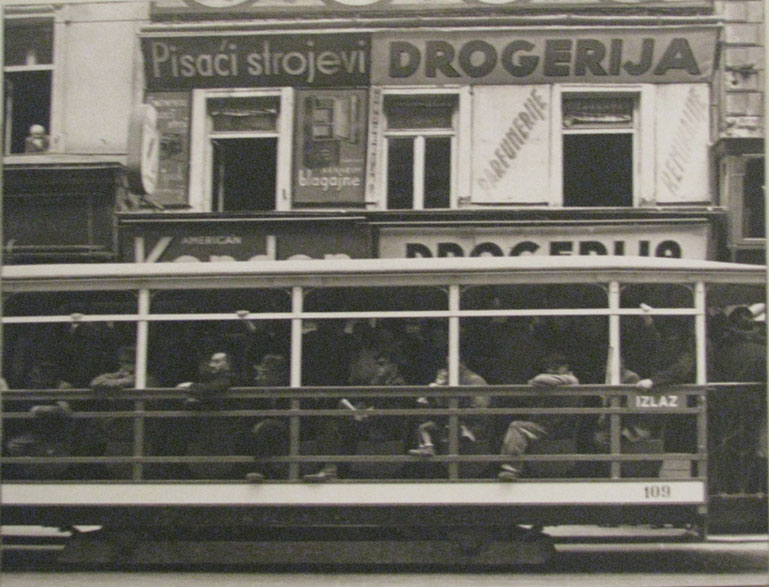 A photograph of how the open carriages of Zagreb trams used to look. The original of this photograph can be found in © Zagreb City Museum
A photograph of how the open carriages of Zagreb trams used to look. The original of this photograph can be found in © Zagreb City Museum
The longest single direction journey you can make on Zagreb trams is between Prečko in the west of the city and Dubec in the east. The journey takes around 76 minutes. You have to change tram only once to make this journey.
Apart from being the most environmentally friendly motorised public transport option in the city, the trams have massively contributed to Zagreb being a modern eco-friendly capital. Many city tram networks run down the middle of roads. While some lines in Zagreb are also placed here, many instead run at the sides of roads. This positioning – plus the way the lines sit in the road – make them problematic for cyclists. And this is partially the reason why Zagreb has 220 kilometres of dedicated cycle paths which exist not on the roads, like in other cities, but on the pavements.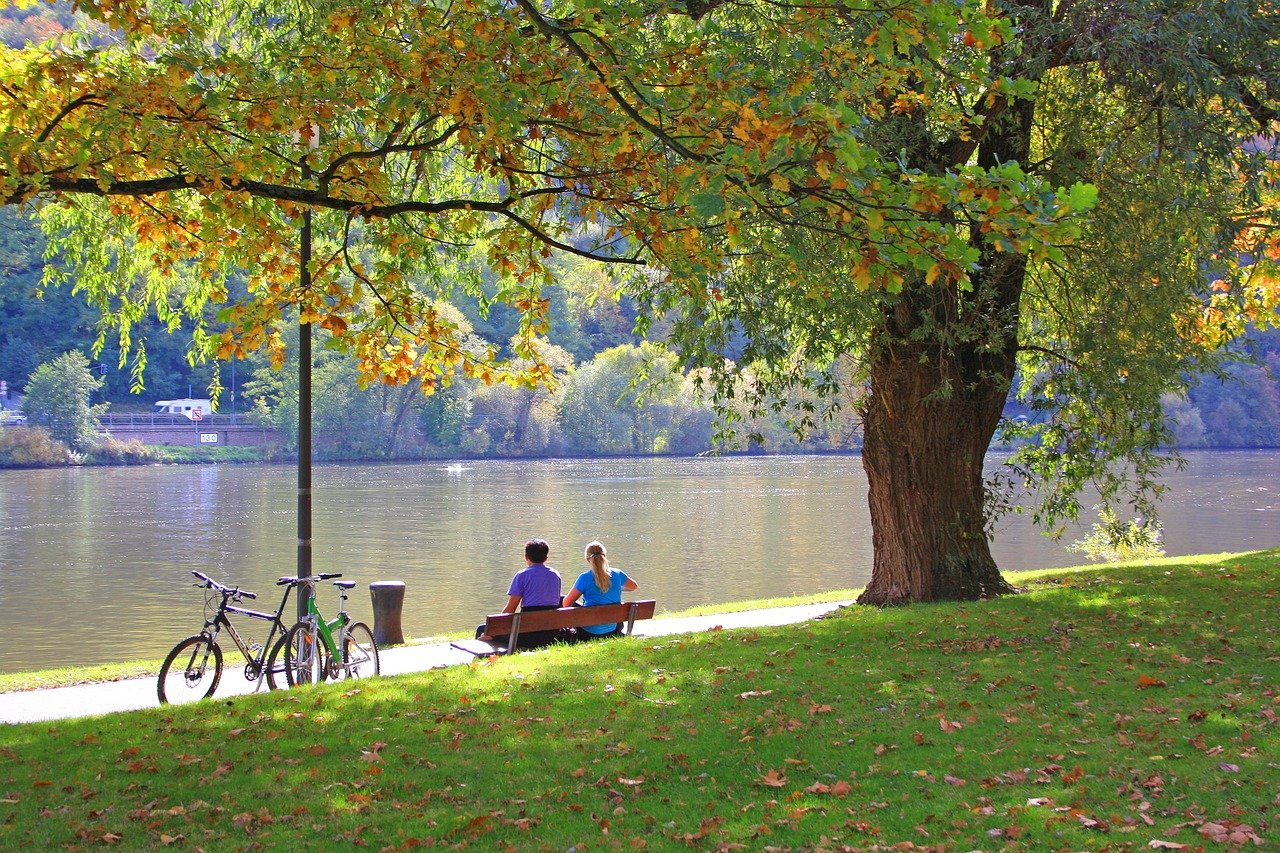 Zagreb's generous 220 kilometres of dedicated cycle paths come partially as a result of the positioning and construction materials of the Zagreb trams network © G Schneider
Zagreb's generous 220 kilometres of dedicated cycle paths come partially as a result of the positioning and construction materials of the Zagreb trams network © G Schneider
One of the world's worst tram accidents happened in 1954 on the Zagreb network. The tragedy took place on the old, steep stretch running near Mirogoj cemetery. Nineteen passengers were killed and thirty seven were severely injured.
During the day, each line runs on average every 5–10 minutes. Almost all stations on the Zagreb tram network sit on at least two lines.
Zagreb's tram network transported 204 million passengers in 2008.
A few years ago, the lowest fare tram ticket was 10 kuna. Zagreb trams were then often ridden by people without a ticket (and still are). The company who runs the tram network, ZET, decided to decrease the price of the lowest ticket to 4 kuna. Since doing so, many more people buy a ticket for Zagreb trams. You can travel for 30 minutes on any tram or trams with a 4 kuna ticket.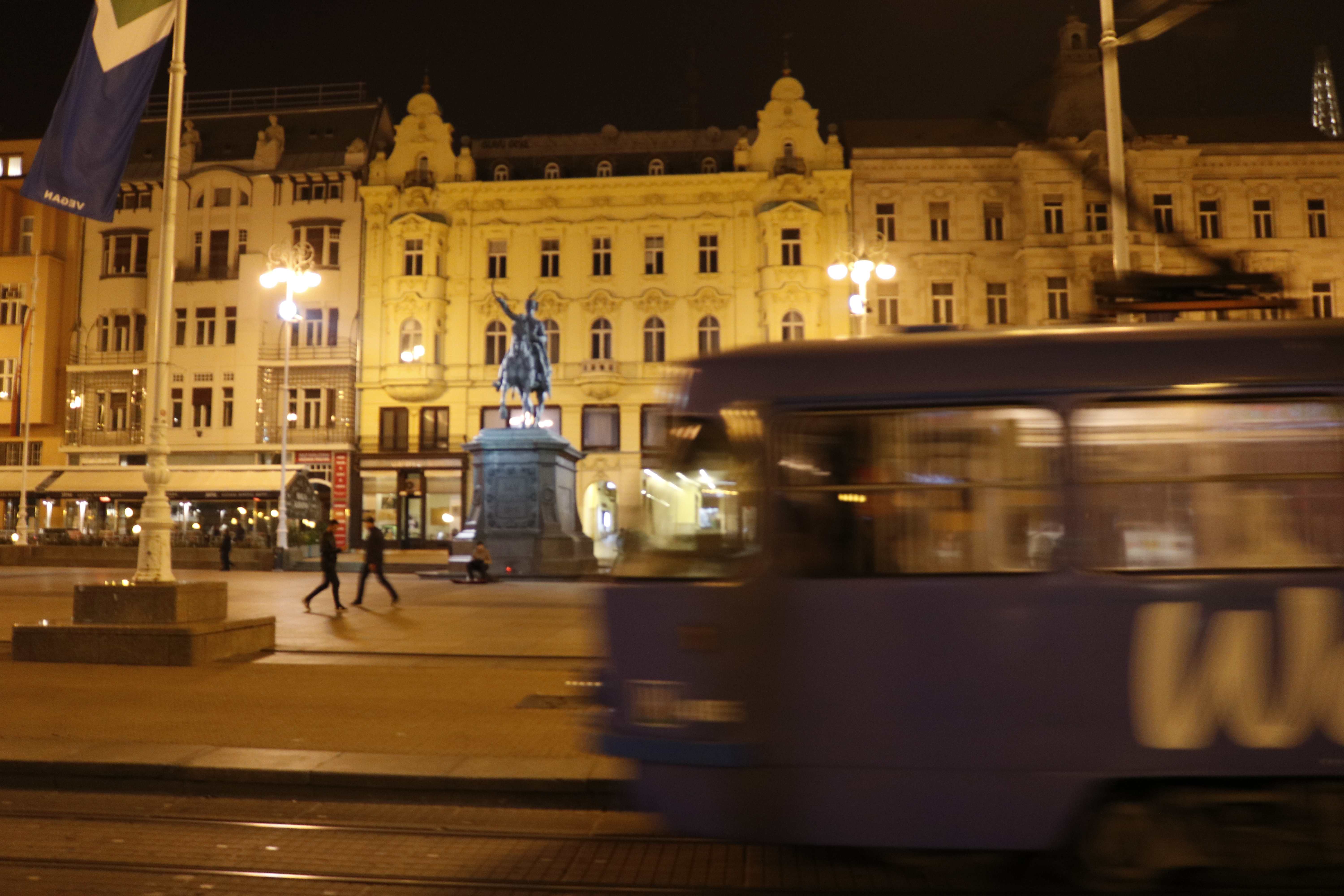 © Marc Rowlands
© Marc Rowlands
All uncredited photographs courtesy © ZET
Zagreb Streets Friendly For Feet - It's European Car Free Day Tomorrow
ZAGREB, September 21, 2020 - Residents and visitors to the Croatian capital will tomorrow learn how Zagreb street life was historically, as the city centre banishes almost all vehicles for European Car Free Day
What would Zagreb's residents of the past think of the city if they saw it today? The Croatian capital's boundaries now extend many kilometres into the surroundings, the huge Sava river is no longer any impediment to travel. The people of the city now live on both sides. Skyscrapers score the sky and well over half a million people can be seen on its streets, roads and highways.
Apart from the size and the unfamiliar building materials, the biggest shock would probably be the speed of the city. Buses and cars race down multiple-lane avenues and trams take you into almost every neighbourhood you'd want to visit. Kaptol, Zagreb in 1905, when almost every day looked like European Car Free Day
Kaptol, Zagreb in 1905, when almost every day looked like European Car Free Day
Tomorrow, Zagreb will return to a pace more familiar to former inhabitants as the city observes European Car Free Day. Motor vehicles will be banned from much of the city's centre between 8 am and 8 pm.
The area of the city centre observing European Car Free Day has the following boundaries; Trg bana Josipa Jelačića - Jurišićeva - Palmotićeva (western edge) - Boškovićeva (northern edge) - Hebrangova (northern edge) - Gundulićeva (eastern edge) - Ilica (northern edge) - Mesnička (eastern edge to Streljačka) - Mesnička - Demetrova - Ilirski trg - Radićeva - Trg bana Josipa Jelačića.
These streets form some of the oldest parts of Zagreb. Long have they been trodden by the pedestrians to whom they'll return tomorrow. Those travelling into the centre by car must park on the outskirts and take public transport into the heart of the city. Trams, taxis and buses will operate as normal.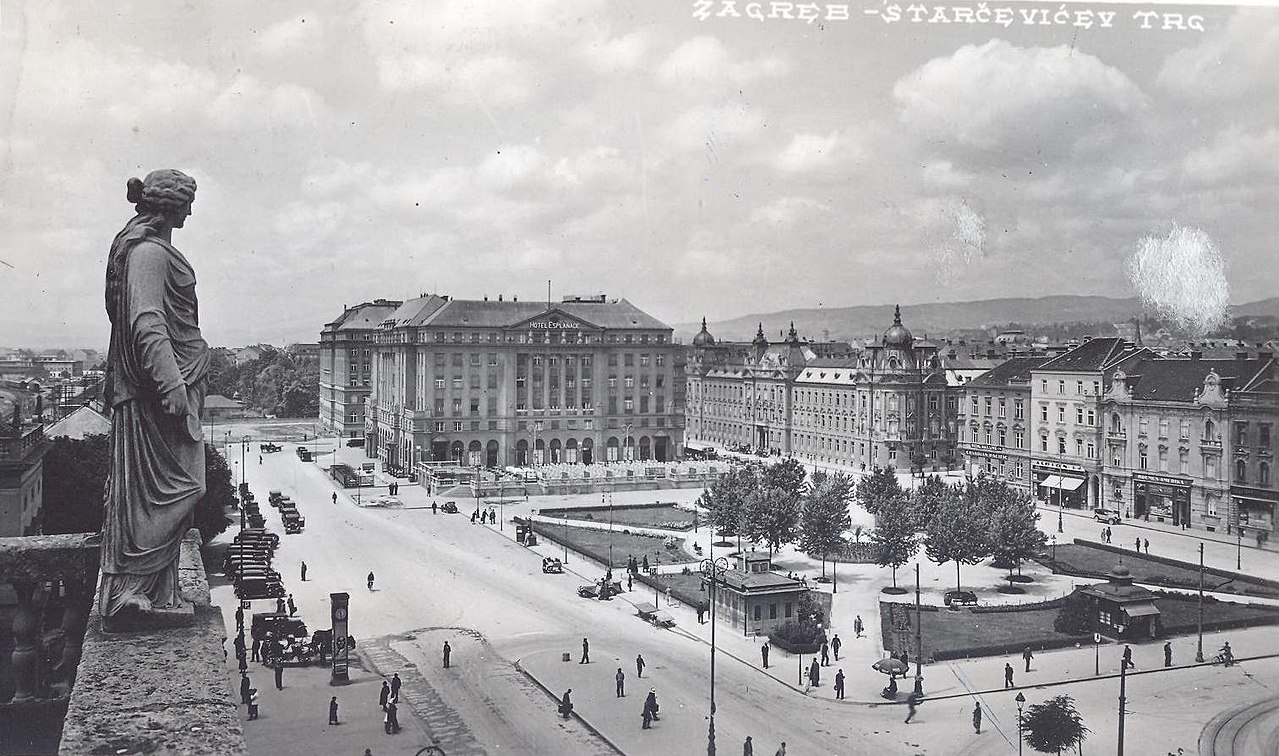 Cars began to be seen more regularly in Zagreb during the first half of the 20th-century. Not so much a European Car Free Day as a Croatian Tram Free Day - the city's famous tram network wasn't nearly so developed back then. The first city in Croatia to have trams was actually Osijek, who introduced a horse-pulled tram network in 1884.
Cars began to be seen more regularly in Zagreb during the first half of the 20th-century. Not so much a European Car Free Day as a Croatian Tram Free Day - the city's famous tram network wasn't nearly so developed back then. The first city in Croatia to have trams was actually Osijek, who introduced a horse-pulled tram network in 1884.
The observance of car-free days is actually over 65 years old, although originally they were introduced in response to oil crises, not for environmental reasons. The more modern reason for having such days is to return city streets to pedestrians. Car-free days have taken place independently in European nations since the mid-1990s, and it 2000 they became aligned on the fixed date of 22 September. European Car Free Day is also a car-free day in many other countries outside of Europe, although this continent is the only one to currently observe it throughout its boundaries.
All uncredited photos lie within the public domain.
For the latest travel info, bookmark our main travel info article, which is updated daily.
Read the Croatian Travel Update in your language - now available in 24 languages
Transport in Zagreb: West and East Could be Connected by "Semi Subway"
When you think of public transport in Zagreb, your mind likely doesn't wander far from the blue trams snaking through the city. But what if something new were to appear to connect East and West Zagreb in a much better way than they're currently connected transport-wise? An interesting idea has surfaced...
As Poslovni Dnevnik writes on the 19th of December, 2019, the three hundred thousand kuna document will have to be produced by whichever company wins the tender.
The tram on Malešnica, pleasantly ridden all the way to Adžijina, then descending to -1 on an underground floor through Donji Grad (Lower Town) and after Zvonimirova, once again back up to the surface and slightly all the way to Dubec, states a report from Večernji list on the idea for this new type of public transport in Zagreb.
Yes, this sounds a bit like something out of a sci-fi movie, something one can barely imagine when packed onto a crowded tram like cattle and driven along at what often seems like a snail's pace all through Zagreb's hellish rush hour traffic jams.
This idea will be decided on by the Assembly in February, and it seems the timing is perfect. The City of Zagreb could have simply neglected the idea of this "semi subway" had no tender been announced for the development of the conceptual design of the extended Kranjčević street, which should make up exactly one part of the section of that potential future tram route.
As previously touched on, the three hundred thousand kuna document will have to be produced by the company that wins the tender and that will be the basis for obtaining a location permit for a future route.
The City of Zagreb now wants to obtain a location permit based on a project that will be worked on along a 700-metre-long stretch from Selska cesta to Fallerovo šetalište.
Make sure to follow our dedicated lifestyle page for much more. If it's just Zagreb you're interested in, give Total Zagreb a follow or check out Zagreb in a Page.
ZET's Electric Cars Fail Miserably But Zagreb Company Still Confident
It seems that ZET's attempt to become a bit more environmentally friendly has fallen flat on its face, at least for now. The twelve electric cars that the Zagreb transport company procured to transport passengers around the Croatian capital have averaged in at a mere one passenger per day.
As Poslovni Dnevnik writes on the 15th of November, 2019, ZET also warned that since last December, the twelve electric cars have been driving in Zagreb's Lower Town (Donji grad) only, while in Gornji grad (Upper Town) they have been operating since July, while around the Jarun lake area, they have been operating "recently".
According to ZET's data on the tickets they sold to tourists for taking them on tours around the city using electric vehicles, they sold just under 400 tickets, which means that the twelve "e-city tour vehicles" have been driving just one passenger each day in the centre of the Croatian capital since last December, meaning that since these golf cars were put into circulation, they've earned four thousand kuna.
According to what ZET told Vecernji list, they're still not operating these vehicles in Gornji and Donji grad on a daily basis ''because they don't drive in adverse weather conditions'' and because of “the frequent special traffic regulations in the city centre, such as those created to allow for sporting, cultural and other events''. Despite what seem like excuses, these e-vehicles are still very much a hit, at least according to ZET.
''With the introduction of these electric vehicles, the tourist offer of Zagreb was further enriched, which has been confirmed by the praise and positive comments from numerous guests,'' they claim.
''Following the technical evaluation of tourist lines so far, preconditions have been created for intensifying the service starting with Advent, while in 2020, additional service development and connections, ie, integration with our other tourist lines, are expected,'' the Zagreb public transport company points out.
Make sure to follow our dedicated lifestyle page for much more. If you're interested in Zagreb only, give Total Zagreb a follow or check out Zagreb in a Page for all you need to know.
Croatia and EU Invest Heavily in Zagreb Tram Network Reconstruction
The general aim is to modernise and improve the quality of Zagreb's tram network, and this particular project does not include the procurement of more trams which is a move that was announced a long time ago.
As Poslovni Dnevnik/Marija Crnjak writes on the 30th of May, 2019, a total of 210 million kuna from EU funds and a small part of the Croatian state budget will fund the reconstruction and the modernisation of part of the capital's tram infrastructure, and the Zagreb Electric tram (ZET) project should be completed by 2023, as was confirmed by the Ministry of Regional Development and EU funds.
The general objective of the project is to modernise and improve the quality of Zagreb's existing tram network in order to properly maintain a good level of public transport services for the City of Zagreb at the EU level regarding safety, reliability, accessibility of persons with disabilities and a significant reduction of negative CO2 emissions.
"The reconstruction of the tram infrastructure includes eleven tramway sections in the length of 8,194 metres, as well as track dismantling, track supply and installation, cable drainage and similar works. The reconstruction and modernisation of these correctional stations will include the procurement and installation of new equipment, works on the reconstruction of the objects themselves and the installation of a cable network,'' the competent ministry explained.
Along with the works, a study on the development of the tram traffic of the City of Zagreb is planned, which aims to analyse the overall state of the tram infrastructure and to introduce measures and targets for its improvement, which should ultimately lead to new projects to be funded from EU funds. Of course, the plan is to fund the project's self-promotion through the development of a communication strategy, the visual identity of the project, slogans and the promotion of activities to further highlight the visibility of the project itself.
As stated in the call for co-financing of the modernisation of Zagreb's tram infrastructure, the maximum amount of grants that can be awarded for the project proposal is up to 210 million kuna, with total available grants from the Cohesion Fund standing at 178.5 million kuna. The percentage of co-financing of eligible costs from Cohesion Fund resources can be up to 85 percent and the mandatory share of national co-financing of eligible costs of at least 15 percent will be provided from the state budget.
The pre-defined applicant is ZET, who has already applied for the call, as was confirmed by that particular Zagreb city company.
For ZET, the modernisation of the capital's trams will ultimately result in an increase in the number of passengers using public transport. As we've come to know, this call refers only to the infrastructure, not to the procurement of trams which has been being discussed in Zagreb for several years now. Whether or not this project is being eagerly awaited by Croatian companies was recently confirmed in a conversation between Poslovni Dnevnik and Darinko Bago, President of the Končar Group's management board.
As it is known, Končar has developed trams, and in Zagreb, 142 of Končar's trams are already in operation. As Bago pointed out, according to city studies, Zagreb should acquire more than sixty new trams, replacing the old and overworked trams that have been driving around the city for around half a century.
''We're very interested in that," Bago stated.
The time frame in which this project can be expected hasn't yet been revealed.
Make sure to follow our dedicated lifestyle page for much more. If it's just Zagreb you're interested in, give Total Zagreb a follow or check out Zagreb in a Page.
Click here for the original article by Marija Crnjak for Poslovni Dnevnik
Zagreb's ZET Public Transport to Introduce Brand New Type of Ticket
Zagreb's ZET is set to introduce a brand new ticket. Whether or not Zagreb's citizens will actually purchase it is another story.
ZET's transport is plagued by people who for various reasons refuse to pay for its use. Excuses range from being dissatisfied by the quality of the vehicle, feeling the route is too long, or simply just wanting to get something for free.. This habit is known in Croatian as švercanje, and avoiding getting caught by a controller and paying a 250 kuna fine is a favourite ''extreme sport'' among many of Zagreb's residents.
As Poslovni Dnevnik writes on the 22nd of March, 2019, in kiosks permitted to sell ZET tickets, there will be three types of carts available for use on ZET vehicles, and exactly that same amount of different tickets will be available for purchase directly from the driver when on the vehicle itself. In other words, tickets costing four, seven and ten kuna will be available to buy from the driver, and these are valid for half an hour, an hour and an hour and a half of travel.
There will be the ability to purchase ZET tickets for six, ten and fifteen kuna from the driver, and these will also be worth half an hour, one hour, and ninety minutes, as they have stated from ZET adding that, in principle, only one brand new ticket will be introduced, which comes with a new six kuna price tag.
As Večernji list writes, the ticket which costs 10 kuna purchased from the driver will still have to visually differ from those purchased at kiosks, as it will not be valid for the same time period.
Make sure to follow our dedicated lifestyle page for much more. If it's just the Croatian capital you're interested in, give Total Zagreb a follow for everything you need to know that's going on in the city.
ZET Tram Tickets Will No Longer Be Sold At Tisak Kiosks
The Agrokor earthquake continues to cause aftershocks...


